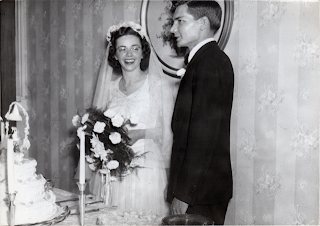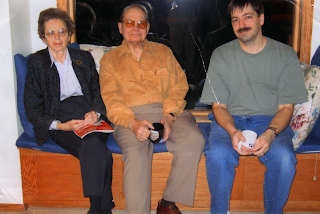[Reposted from
Dread Tomato Addiction, written 4/18/2009]
Flatland, by Edwin A. Abbot, was my first math book. I probably had math textbooks in school before this, but Flatland is the book I remember.
Flatland mattered, because it caught my imagination.

My Dad showed me this book, and walked me through the concepts of understanding dimensions. I learned to that a creature in a two-dimensional Flatland would find it difficult to grasp the concept of a third "up and down" dimension completely outside of their experience. This gave me a new insight on how our own 3-D world might seem similarly "flat" to a creature that lives and perceives in 4 or more dimensions. The concept of higher dimensions, which was and is beyond my experience, suddenly made sense, and these were fascinating thoughts for my pre-teen mind.
My Dad taught me a lot of cool stuff. He was a Physicist by training, and a Computer Scientist from the time when the field was just inventing itself. There were always science books around the house, not to mention science fiction. Also magazines; The latest issues of Science, Scientific American, and Analog could usually be found on his desk. These provided a constant supply of real and fanciful ideas for a young mind. My dad always thought of himself as a scientist. He always tried to keep up with the latest innovations and discoveries in science and technology. He never stopped trying to learn, and perhaps the greatest thing he ever taught me was that I should never stop trying to learn either.
When I started writing this post a few days ago, it was just supposed to be about Flatland, and my rediscovery of an old book that had a big influence on me. Thing change though, and so have the direction of my thoughts over the past few days. My father, my teacher, my mentor, passed away peacefully last night, his body finally giving in to illness and deterioration brought on by progressive dementia. I thought I was prepared for this, but knowledge that death is coming doesn't quite prepare you for its arrival. Though his slow decline has been painful to see, I am grateful he could be with us for so long, and that the disease took him as quickly as it did; Amazingly quickly compared to what I understand to be the normal course of dementia, which is a testament to how well he was able to adapt and compensate for as long as he did.
Things change, and the student becomes the teacher. One of my reasons for this blog is to pass on some of that fascination with science that my Dad instilled in me. Also, to pass along (
some might say "inflict") some of his sense of humor as well, which I also seem to have inherited.
Things change. People pass on. I miss you Dad. God bless.
In Loving Memory: Douglas Earl Eastwood (1924-2009).

[Hat tip to
God Plays Dice for leading me to
E-Books Directory and
4DLab, where is found this
PDF edition of Flatland. Hence the source of the illustrations.]

 Douglas Eastwood, my father, passed away about 10:30 PM on Friday, April 17, 2009. He was 84 years old, and had been suffering from dementia. I wanted to set up an online memorial for people to visit, and with my own recent interest in blogging setting this up as a blog seemed like the best approach. This also has the benefit of allowing visitors to respond and add their own comments. Dad was always interested in the latest trends in computers and technology, so I think he would have appreciated this too.
Douglas Eastwood, my father, passed away about 10:30 PM on Friday, April 17, 2009. He was 84 years old, and had been suffering from dementia. I wanted to set up an online memorial for people to visit, and with my own recent interest in blogging setting this up as a blog seemed like the best approach. This also has the benefit of allowing visitors to respond and add their own comments. Dad was always interested in the latest trends in computers and technology, so I think he would have appreciated this too.




















